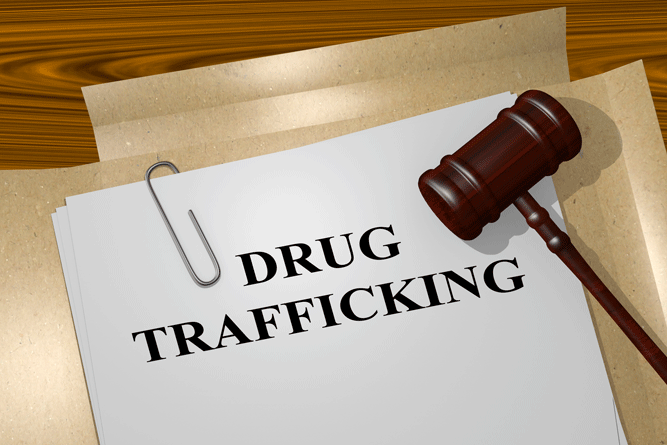The drug situation in the United States has gotten serious indeed. Across the country, men and women of all ages and from all walks of life are finding themselves beholden to the self-destructive urges that result from a substance abuse problem. Unfortunately, despite knowing the risks that are inherent in the use or misuse of alcohol, street drugs, and pharmaceuticals, more and more people are becoming addicted all the time, which is reflected in the growing rate of addiction nationwide. As a result of the growing addiction problem, we’re seeing a number of secondhand effects that are separate from, yet directly related to addiction in the U.S., such as the recent indictments that perfectly illustrate the severity of the Ohio drug epidemic.
At present, we’re going to be discussing the recent events in Ohio. However, it’s important to understand the complex relationship between mind-altering substances and crime in the United States.
Drugs and Crime: The Dynamic, Destructive Duo
The majority of the U.S. population holds addicts in an extremely low regard. This stigmatization of addiction is well-known and highly publicized, particularly since addiction is a disease that addicts can’t overcome through the sheer strength of their will. These individuals are suffering from a condition that requires some form of treatment, but they’re viewed with a lower regard than individuals suffering from mental illness. It seems that the predominant reason for this is because addiction and substance abuse are increasingly associated with crime. This association isn’t unreasonable, especially when you consider that the media consistently portrays addicts in contexts involving crime. So what exactly is the actual relationship between substance abuse and crime?
To be clear, substance abuse has been found to be a factor is much of the crime that’s committed in the United States. According to estimates, alcohol and drugs are implicated in approximately 80 percent of all criminal offenses that result in incarceration. However, while many criminal offenders tend to have a history of substance abuse, this doesn’t mean that all substance abusers are criminals. Unfortunately, this statistic and similar facts are cited as proof that addicts are violent and dangerous, but the reality is that it’s only the violent and dangerous addicts committing these crimes. There are a far greater number of addicts who aren’t committing these crimes, which is why they’re not the subject of media coverage. It is important to note that while the Ohio drug epidemic is increasing crime, not all those who are addicted are violent. While it’s important to be aware of this discrepancy, it’s also important to remember that addicts suffer from a disease; this doesn’t liberate them from accountability, but it should be taken into consideration. Instead, we might consider focusing on crimes involving the import and distribution of these dangerous substances in our communities.
Drug Conspiracy in Northeastern Ohio
As you’re surely aware, street drugs aren’t produced in the countless communities that they’re destroying. In virtually all cases — save for those very rare instances when a substance is actually produced locally — the drugs are brought in from elsewhere. Depending on the substance, this could mean that it’s transported from town to town, across state lines, from one region of the U.S. to another, or from other countries. For instance, heroin, which is at the center of the Ohio heroin epidemic that has also overtaken much of the United States, tends to come from Central and South America or from Asia; meanwhile, much of the marijuana in the United States comes from Mexico. To get these substances to smaller communities, they’re first imported into some of the larger cities in the United States — Dallas, New York City, Los Angeles, Chicago Seattle — from which they’re distributed to medium-sized and, finally, smaller cities and towns.
In Northeastern Ohio, authorities have been tracking a major problem with cocaine, heroin, marijuana, and fentanyl, much of which was making its way into the area from New York City and Chicago. These drugs have been causing major problems for the already intense Ohio drug epidemic, especially heroin as it recently caused a horrifying spike of 27 overdose deaths in just 24 hours in the state’s capital city of Columbus. It’s believed that the individuals who were in charge of this operation and who were distributing these substances from Northeastern Ohio to the rest of the state had ties to the Sinaloa Cartel, an infamous drug-trafficking and organized crime syndicate based in Mexico; therefore, finding the source of the mass amounts of drugs being brought into Ohio became a major priority for law enforcement officials in the region.
Twenty Indictments Result From the Raid of Ohio Drug Ring
Finally, in mid-October, authorities arrested 51 individuals who were confirmed to have been involved with the Northeastern Ohio drug ring. Upon raiding the operation, huge quantities of multiple substances were confiscated, including 29 kilograms of cocaine, six kilograms of heroin, and one kilogram of fentanyl in addition to more than $400,000 in cash and lots of illegal firearms. From the 51 individuals who were arrested as part of the operation, there have already been 20 indictments for drug conspiracy.
The operation was found to be quite extensive. Those who were involved in the drug ring have a number of properties throughout the Cleveland area set up as “stash houses” where large quantities of drugs could be stored. It was also from these properties that the perpetrators distributed drugs and collected money for the drugs. As well, all the vehicles used by those who were involved in the drug ring were outfitted were aftermarket modifications, most of which were traps doors and secret compartments that were used to transport drugs between the stash houses. Authorities estimate that this group was responsible for bringing about 100 pounds of heroin into the area just recently, and while they hope that this will help to stave off some of the overdose deaths that have been occurring in the area, the work is not yet done.
Are You Caught Up in the Ohio Drug Epidemic?
If you or someone you love would benefit from learning more about the recovery resources we have available, call Ohio Addiction Recovery Centers toll-free at 800-481-8457. We’re available anytime, day or night, to help you or your loved one begin the journey back to sobriety and health.







